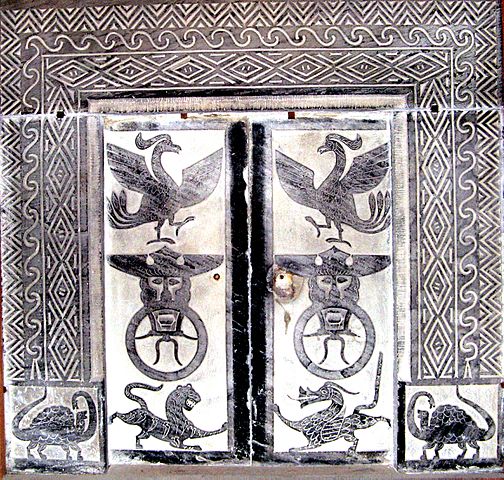
Tomb Door With Symbols Of The Four Cardinal Directions
Eastern Han Dynasty
Beilin Museum, Xi'an
The four Chinese directional animals (siling, or "four spirits,") are: the Green Dragon of the East, the White Tiger of the West, the Red Bird of the South, and the Dark Warrior of the North. The bird appears in duplicate at the top of the panels; the tiger and dragon are inscribed at the bottom of the left and right doors respectively, while the Dark Warrior is repeated on the two bottom corners of the doorframe.
The directional scheme is consistent from the point of view of the tomb occupant (behind the doors, thus reversing right and left). The duplicated figure in the middle of the doors represents a mask that has been assembled from pieces of jade and that includes a circular bi.
Directional animals are associated with the Five Phases thought of Han, as in the table below (source: Michael Loewe, Faith, Myth, and Reason In Han China, Hackett Publishing 2005, pp. 41-42. See also Kelley L. Ross, The Greek, Indian, and Chinese Elements.)


